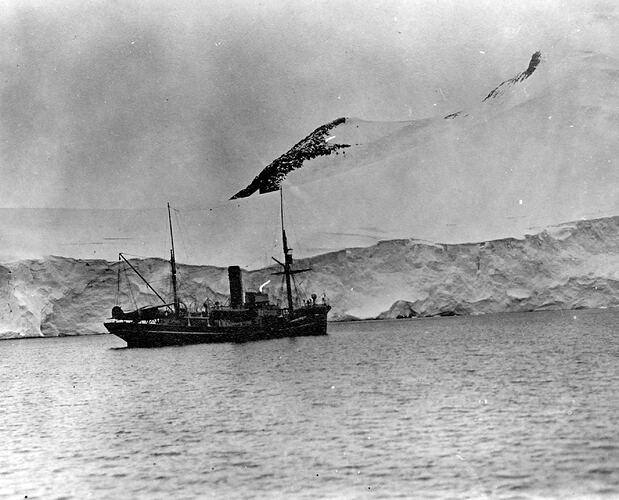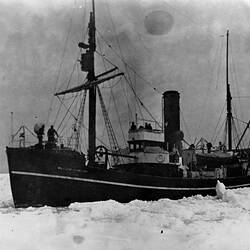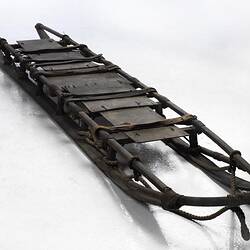Summary
Photograph probably taken by George Rayner.
The 'William Scoresby' was a purpose-designed research vessel built for the Discovery Committee by the East Yorkshire shipyard of Cook, Welton & Gemmell, at Beverley. She was named after the famous British artic explorer and scientist, William Scoresby (1789-1857), who had explored and mapped much of the Greenland coastline in the early 18th century. Described as part whale chaser, trawler and floating research laboratory, the 'William Scoresby' completed seven voyages to Antarctic waters between 1926 and 1937, operating initially with the 'Discovery' and later the 'Discovery II', based mainly out of Stanley in the Falklands and Grytviken on South Georgia. During this period her crew tagged and tracked 3,000 whales and undertook studies on plankton, fish and hydrological surveys. During her longest voyage in 1928-1930, the vessel was involved in the Second Wilkins-Hearst Antarctic Expedition, in which Sir Humbert Wilkins attempted to make the first trans-Antarctic flight, using two single-engined Lockheed Vega aircraft financed by the US newspaper tycoon William Randolph Hearst. In December 1929, one of the aircraft was loaded onto the after-deck of the 'RRS William Scoresby' at Deception Island and the ship sailed south to below the 67th parallel in an attempt to find solid pack-ice from which the place could take off using skis. After the search proved unsuccessful, floats were fitted and the plane was lowered into the water by crane for take-off. Using this method several successful flights were completed over a period of weeks, but the plane had insufficient range to attempt a full trans-Antarctic flight.
Description of Content
Photograph of a steam ship moored close to a deep snow-covered shoreline with a steep rocky mountain ridge partially visible in the background to the right. On the afterdeck of the ship is a light aeroplane slung from a jib crane boom attached to the aft-mast.
More Information
-
Collection Names
-
Collecting Areas
-
Acquisition Information
Donation from Mrs E. Rayner, 28 Jun 1984
-
Place Depicted
-
Photographer (Probable)
Mr George Rayner, Antarctica, 1927-1939
Biologist with the SS Discovery on investigations in the waters of the Falkland Islands Dependencies. Research included hydrographic surveying and whale marking. -
Individuals Identified
Rayner, George
-
Format
Photograph, Black & White
-
Classification
-
Category
-
Discipline
-
Type of item
-
Overall Dimensions
11.6 cm (Width), 9.4 cm (Height)
-
Keywords
Aeroplanes, Antarctic Exploration, Antarctic Research, Antarctica, Expeditions, Ships


